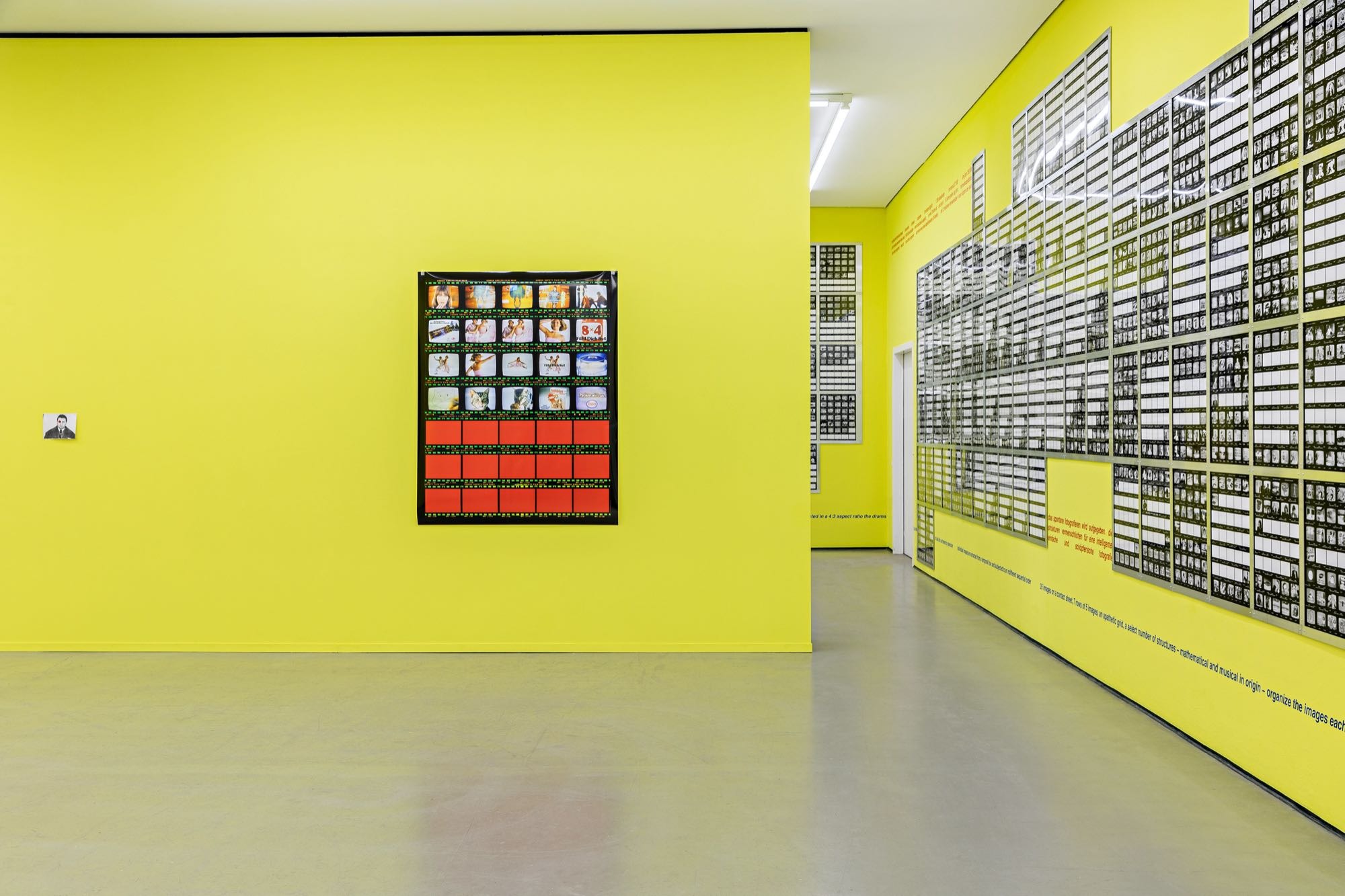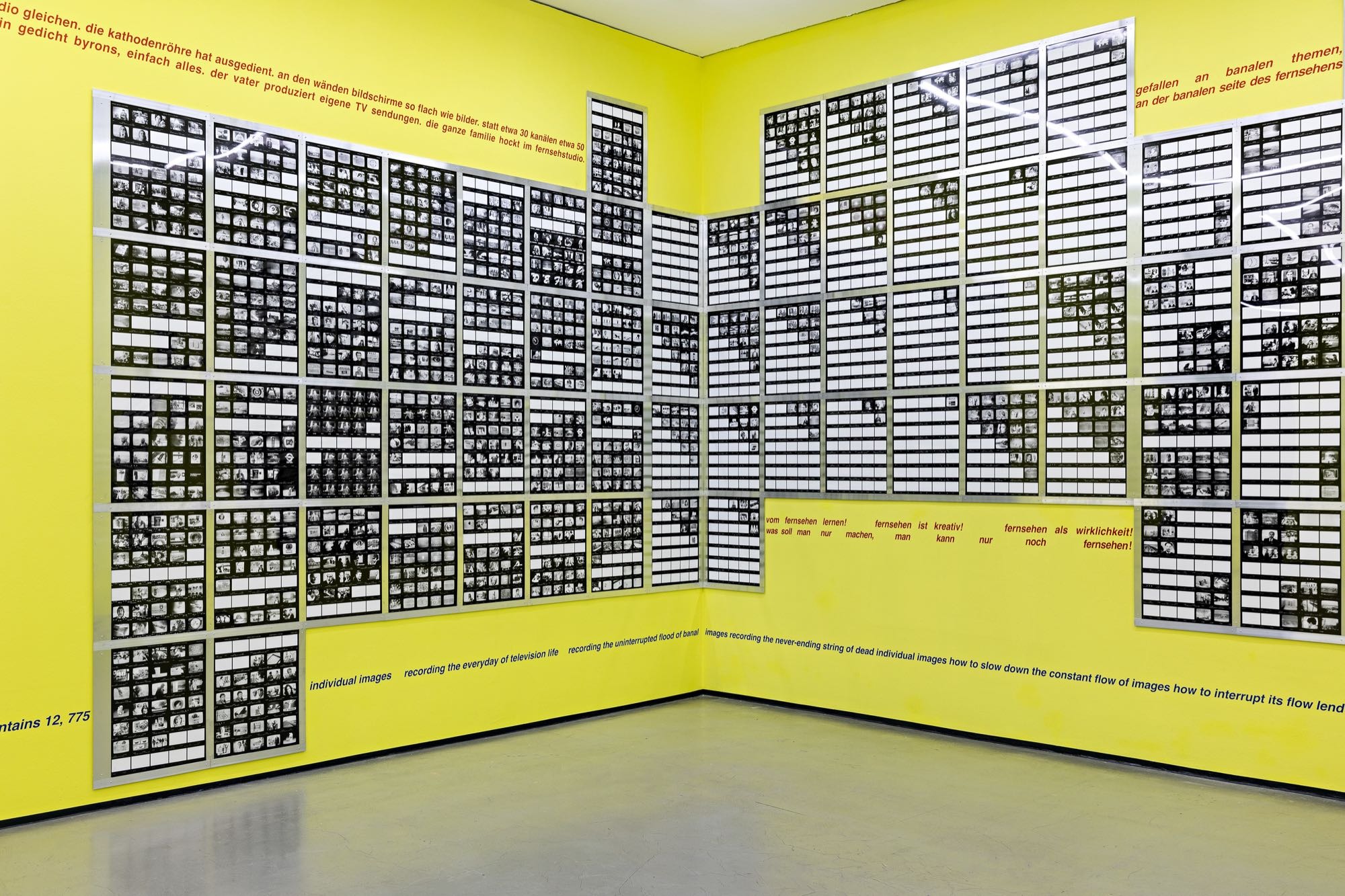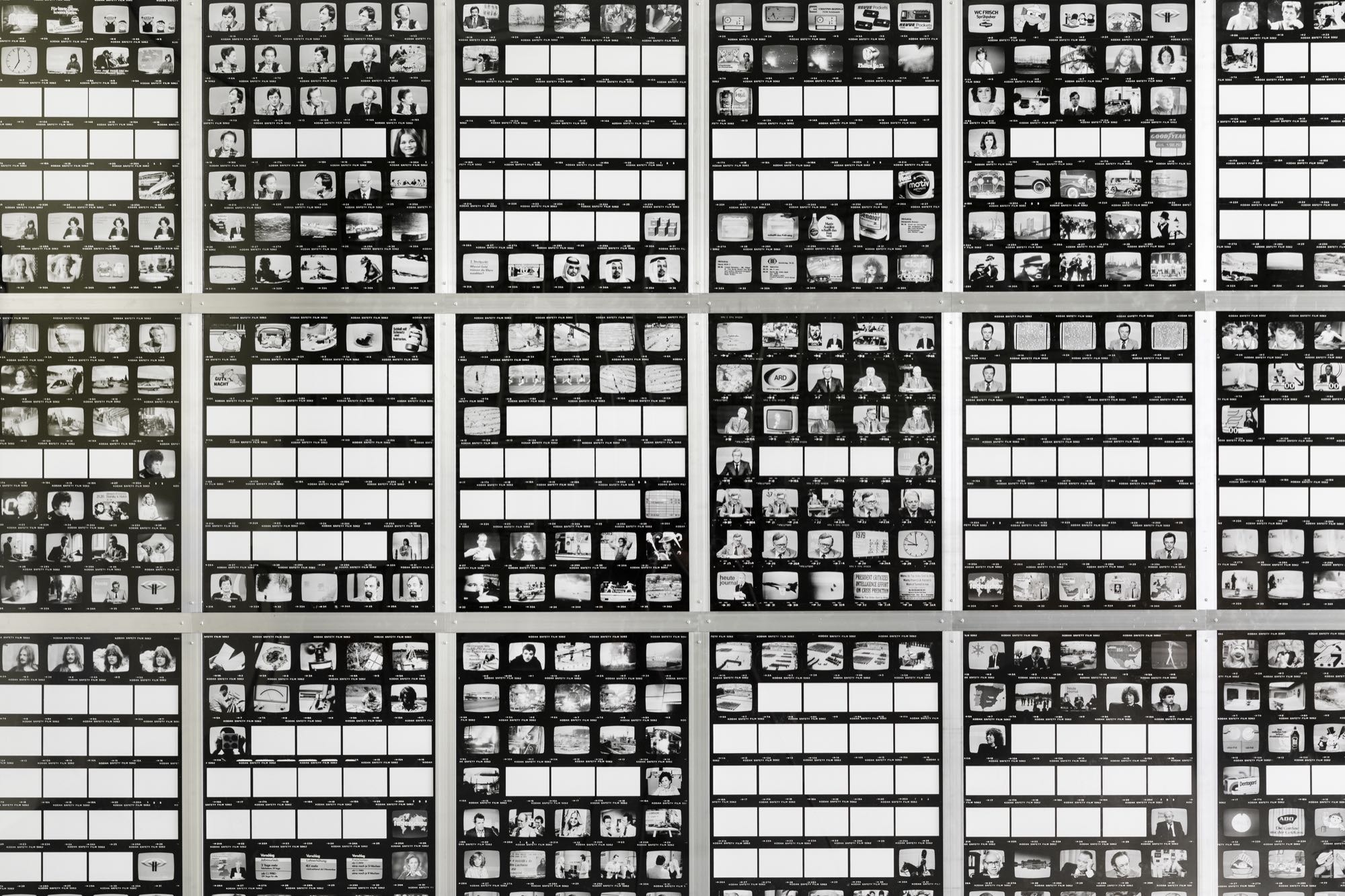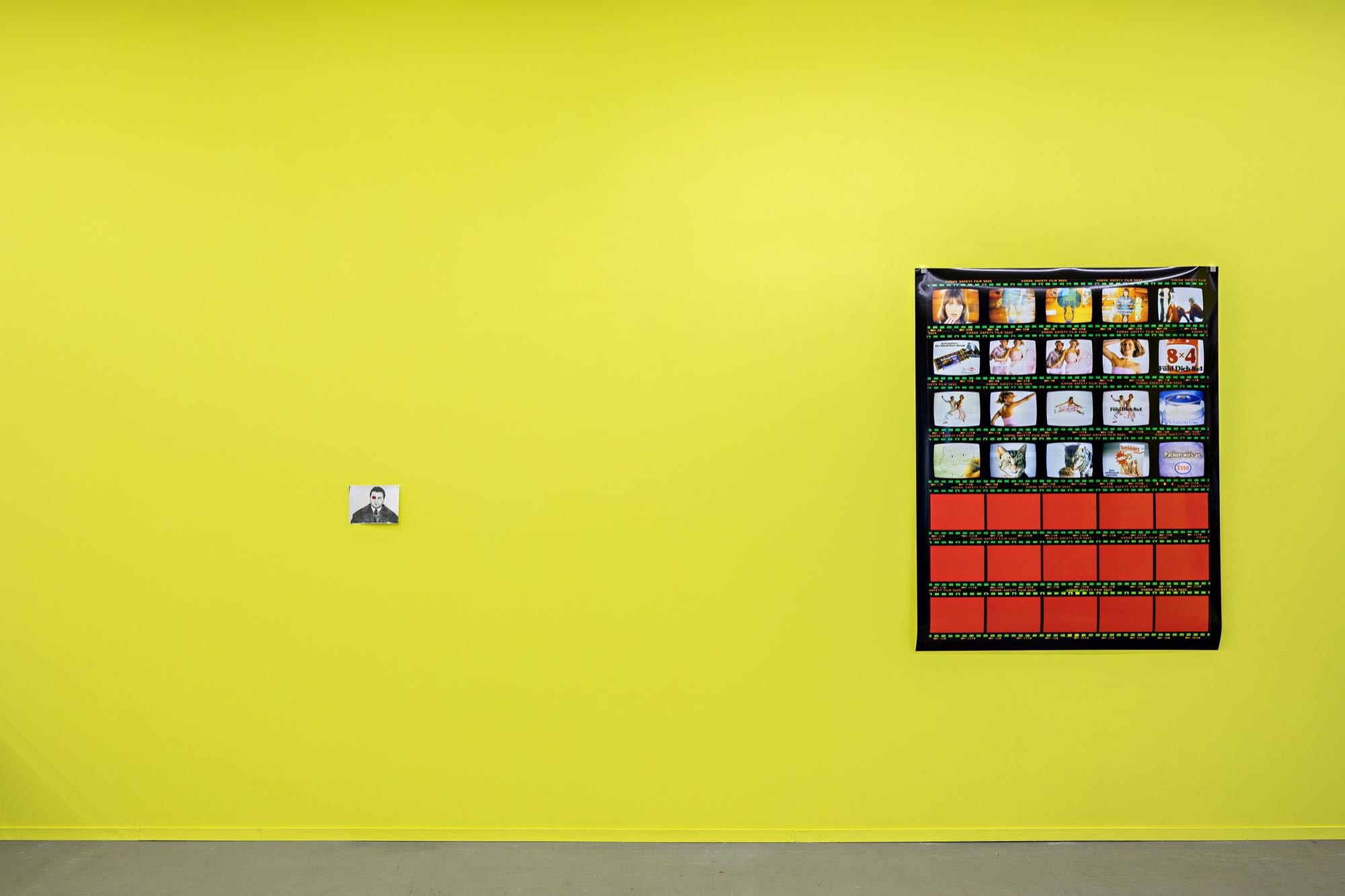Ludwig Schönherr
05 Mar - 01 May 2022

Ludwig Schönherr, Bilderinflation, 2022. Installation view at Kunstverein Hamburg, photo: Fred Dott
In the mid-1970s, the artist Ludwig Schönherr (1935-2016) began to explore the flood of images of his time, which admittedly was not determined by social media but by television. He contacted television stations in the U.S. and Germany and consulted scholarly analyses to gather information about the effects of television on viewers and their possibilities for education or "dumbing down." In the synopsis for his extensive photo series Bilderinflation (Image Inflation, 1978), Schönherr states, "Every German sits in front of the television for 4 hours and 25 minutes a day, every American for 5 hours and 16 minutes, every Japanese for over 7 hours." How many images did these TV viewers process per day? How can individual images be distinguished in the constant flow of broadcasts? Schönherr conceived an ingenious and ambitious project of "structural photography."
Starting with musical structures, he produced twelve scores that served as the basis for a year-long series of photographs. Each day for about four and a half hours, Schönherr shot a roll of select television images. Following the score, the photographs were taken in such a way that in variable constellations with white frames they built up specific geometric structures in the grid of a contact sheet. He carried out the project for 365 days in 1978, dividing his time between Hamburg and New York City. While Schönherr never realized this project in the form of an exhibition and only showed small sections of the work in his lifetime, he left copious notes, diagrams and conceptual papers that document the production process and signal his intent. The organizers of this exhibition have drawn on a deep engagement with these primary materials while working creatively to interpret Schönherr’s project for a new installation format. In addition to Bilderinflation’s 365 photographs, which have been newly printed to Schönherr’s specifications, the artist’s first institutional solo exhibition also presents archival materials, including scores, visual scripts, and concept papers that document the work’s research and development phase, as well as related work by the artist on the subject of television. These materials are placed in dialogue with the significance of color and colored light in Schönherr’s works. The exhibition further combines quotes from the artist with commentary on his work by Marc Siegel. In an era marked by the seemingly endless stream of online digital images, Schoenherr's Bilderinflation is a fascinating example of an artistic strategy for lending structure, order, and form to ephemeral images, reclaiming them as objects of analysis and aesthetic experience. Beyond the artist's aesthetic innovation, Bilderinflation provides a unique media and art historical archive of its time.
Ludwig Schönherr, also known as Peter Schönherr and Ludwig Winterhalter, was born Günther Helmut Peter Schönherr on May 30, 1935 in Nordhausen, Thuringia. In the 1960s, Schönherr became involved with photography and later Super 8 filmmaking. In 1967, he bought his first black and white television set, which inspired his intensified intellectual and artistic preoccupation with TV images. Over the next few years, he produced dozens of single and multi-frame silent Super 8 films of television images interrupted by flashes of color, which he dubbed “electronic films” and “TV art.” In the early 1970s, Schönherr began working on photography projects involving images from TV. In accompanying texts and notes, he developed theories of several of his works as examples of “structural photography” and “absolute photography.” He considered his carefully structured contact sheets as his artistic contribution. The peak of his artistic and theoretical consideration of television is the year-long series Bilderinflation (1978). During his lifetime, Schönherr refrained from presenting his work in public. In the 1990s and 2000s, he turned towards computer editing software to create new digital images and rework his earlier photos. Ludwig Schönherr died on September 30, 2016 in Berlin.
Organized by Jonathan Berger, Susanne Sachsse und Marc Siegel, in collaboration with Zoom – Ludwig Schönherr Labor (Berlin).
Starting with musical structures, he produced twelve scores that served as the basis for a year-long series of photographs. Each day for about four and a half hours, Schönherr shot a roll of select television images. Following the score, the photographs were taken in such a way that in variable constellations with white frames they built up specific geometric structures in the grid of a contact sheet. He carried out the project for 365 days in 1978, dividing his time between Hamburg and New York City. While Schönherr never realized this project in the form of an exhibition and only showed small sections of the work in his lifetime, he left copious notes, diagrams and conceptual papers that document the production process and signal his intent. The organizers of this exhibition have drawn on a deep engagement with these primary materials while working creatively to interpret Schönherr’s project for a new installation format. In addition to Bilderinflation’s 365 photographs, which have been newly printed to Schönherr’s specifications, the artist’s first institutional solo exhibition also presents archival materials, including scores, visual scripts, and concept papers that document the work’s research and development phase, as well as related work by the artist on the subject of television. These materials are placed in dialogue with the significance of color and colored light in Schönherr’s works. The exhibition further combines quotes from the artist with commentary on his work by Marc Siegel. In an era marked by the seemingly endless stream of online digital images, Schoenherr's Bilderinflation is a fascinating example of an artistic strategy for lending structure, order, and form to ephemeral images, reclaiming them as objects of analysis and aesthetic experience. Beyond the artist's aesthetic innovation, Bilderinflation provides a unique media and art historical archive of its time.
Ludwig Schönherr, also known as Peter Schönherr and Ludwig Winterhalter, was born Günther Helmut Peter Schönherr on May 30, 1935 in Nordhausen, Thuringia. In the 1960s, Schönherr became involved with photography and later Super 8 filmmaking. In 1967, he bought his first black and white television set, which inspired his intensified intellectual and artistic preoccupation with TV images. Over the next few years, he produced dozens of single and multi-frame silent Super 8 films of television images interrupted by flashes of color, which he dubbed “electronic films” and “TV art.” In the early 1970s, Schönherr began working on photography projects involving images from TV. In accompanying texts and notes, he developed theories of several of his works as examples of “structural photography” and “absolute photography.” He considered his carefully structured contact sheets as his artistic contribution. The peak of his artistic and theoretical consideration of television is the year-long series Bilderinflation (1978). During his lifetime, Schönherr refrained from presenting his work in public. In the 1990s and 2000s, he turned towards computer editing software to create new digital images and rework his earlier photos. Ludwig Schönherr died on September 30, 2016 in Berlin.
Organized by Jonathan Berger, Susanne Sachsse und Marc Siegel, in collaboration with Zoom – Ludwig Schönherr Labor (Berlin).



